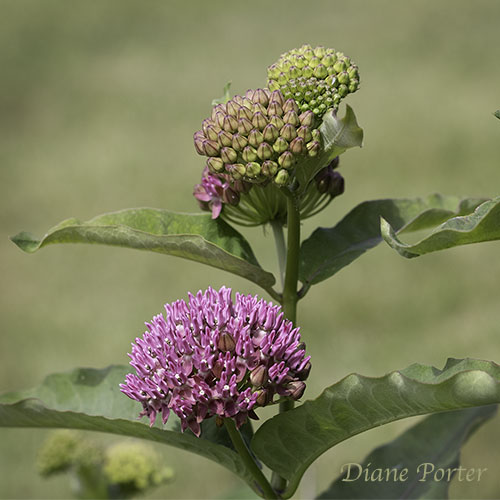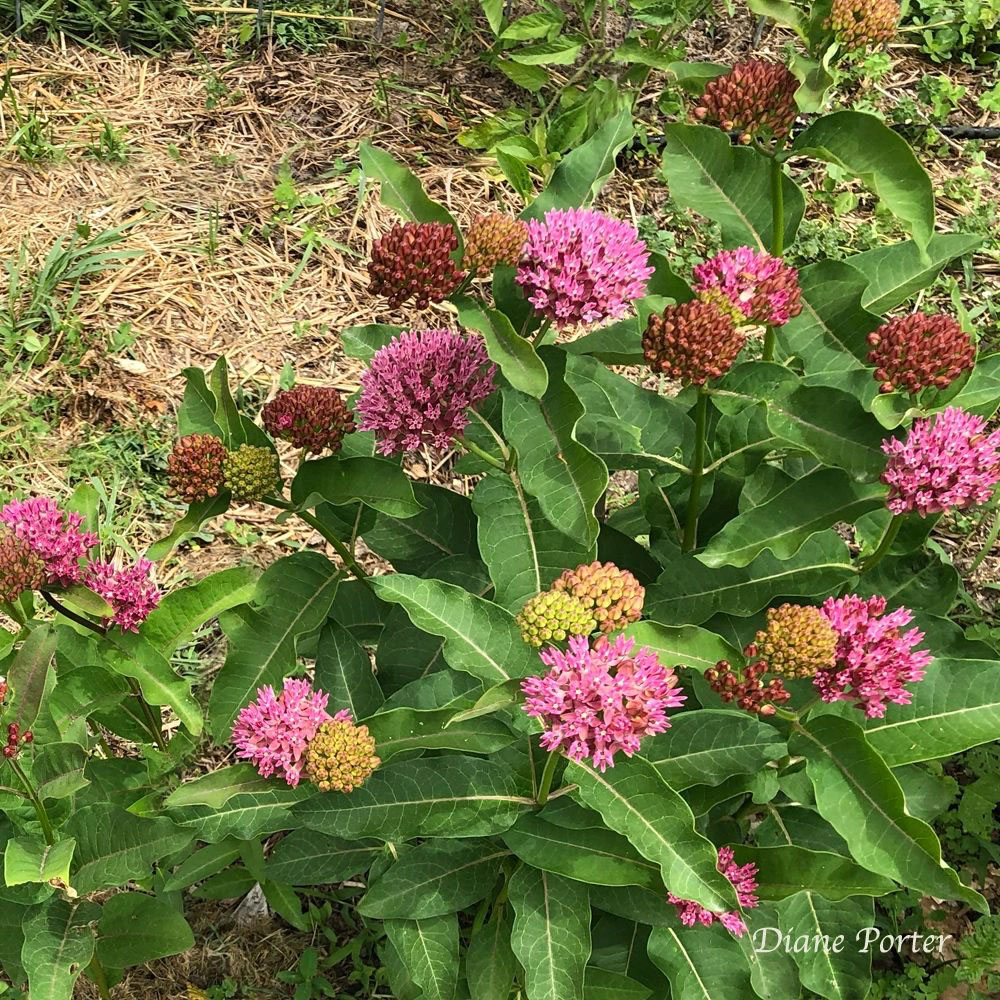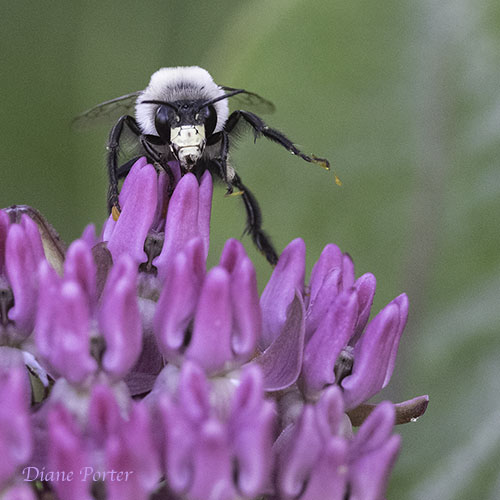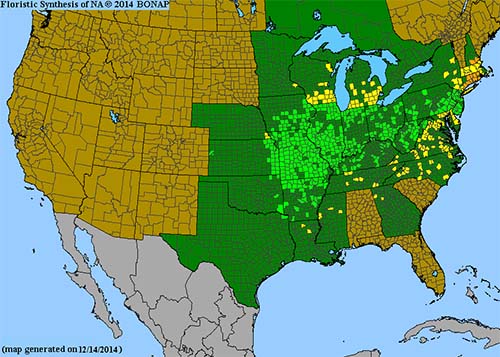First Purple Milkweed
Fireworks Day

Today the first Purple Milkweed opened in my nursery patch. Celebration and fireworks! I'm giddy like with first love to see this flower in bloom again.
Each mature plant has several umbels of blossoms. (An umbel is a cluster of flowers that radiate out from one point, each on its own little stem.)
The flower heads are green in bud. Then they run through a parade of colors, turning pink and getting more saturated as they mature into a burst of color.
I can just stand and stare at these blossoms and forget the rest of the world.
Long road to love
I longed for Purple Milkweeds before I ever saw one in real life. Seeds were hard to come by. Most sources were out of stock. The few seed sources I found on the Internet were from states far away from my Iowa home. Some were in China, and I didn't know what those plants might actually be. So I waited for a local source to appear.

At last, and to my astonishment, in 2016 I found a little stand of three Purple Milkweeds, growing wild on my own land. The flowers weren't open yet. It was just buds, and at first I wasn't sure what they were. It seemed to take forever for the blossoms to open. When at last they did, I knew them to be Purple Milkweed. Yay!
The plants made only a few pods. I collected one and grew out its seeds. The resulting plants now have a piece of a row to themselves in what used to be entirely a vegetable garden. (See the seeds section of my birdwatching website.)
Making more milkweeds
Milkweeds are the most particular of flowers. To form pods and seeds, a flower must be pollinated.

However, milkweed pollination is such a difficult and iffy process that I'm amazed the plants can reproduce at all. An insect (likely a bee, butterfly, or wasp) must accidentally get a foot caught down inside a blossom. It struggles for a while. When it pulls free, the foot comes out with a packet of pollen attached. (The bee in the photo is Anthophora abrupta, one of the Miner Bees.)
Then the insect must experience a second, similar mishap, losing its foot in a different blossom. This time it may leave the pollen packet behind, and thus the second flower will then be pollinated.
The catch is that the second flower cannot be on the same plant as the first. Milkweeds can be pollinated only by the genetic material of a different individual. If the insect deposits the pollen in a different flower but on the same plant, no pollination will occur. And of course if the insect loses the pollen on a different species of plant, again there will be no pollination. In the photo below you can see the pollinia, double sac of pollen that the bee accidentally has pulled out of a blossom when its foot got stuck.

There may be three or four umbels of flowers on one milkweed plant. And in that cluster blossoms there may be dozens of flowers. And each one could theoretically produce a pod containing dozens of seeds.
However, this seldom, if ever, happens. And it virtually never happens extremely in Purple Milkweed. This species is shy to reproduce.
In real life, a Purple Milkweed is likely to make only one or two pods, and very likely none at all. I think the most I've ever found on a single plant was four pods. Of all the milkweeds I've grown, Purple Milkweed has been the least prolific producer of seeds
This, by the way, is why it's hard to find Purple Milkweed seeds, and they tend to be expensive.
Range of Purple Milkweed

The map from BONAP shows the native range of Purple Milkweed.
The light green color shows counties where it is found growing wild. (Never mind the dark green. It means only that the species is found somewhere in the state.) This map was produced by The Biota of North America Program (BONAP).
mapAsclepias purpurascensNames of the milkweed
Full common name:
Purple Milkweed
Scientific name:
Asclepias purpurascens
— Diane Porter, Fairfield, Iowa, June 9, 2022
See more of Diane's blogposts about plants

